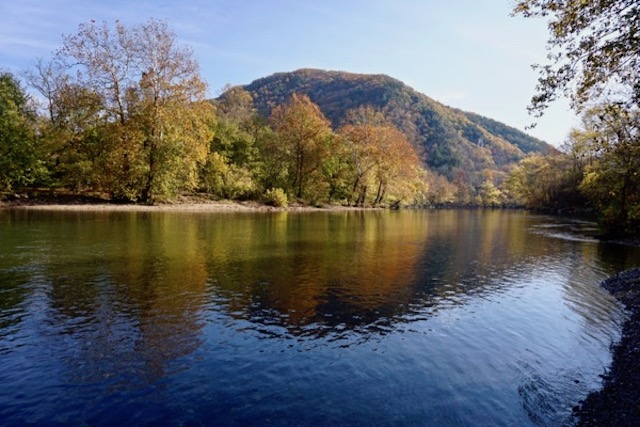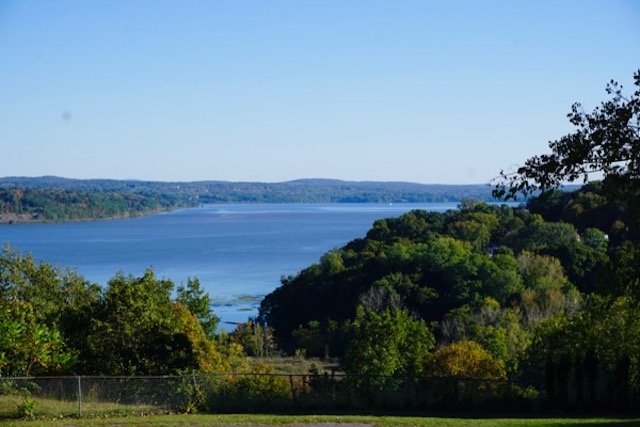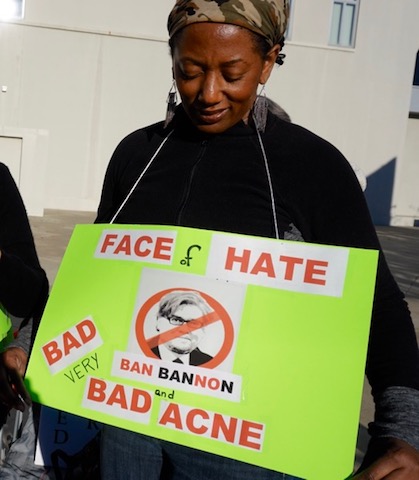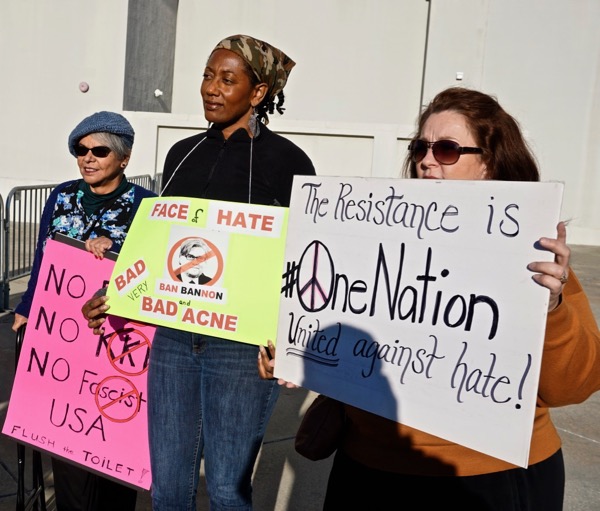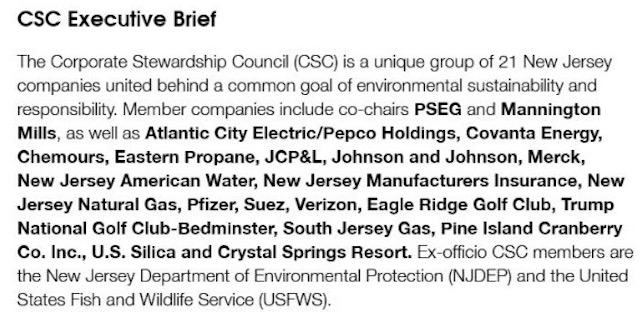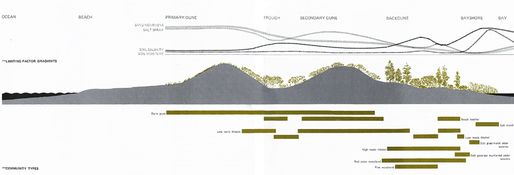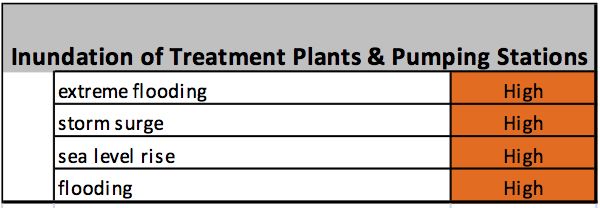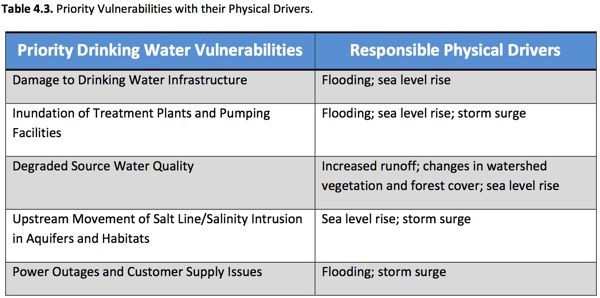But Enck Rolled Over As NJ Gov. Christie Rolled Back Federal Protections
Is Enck laying foundation for US EPA Administrator in 2020?

former EPA Region 2 Administrator Judith Enck at NJ Superfund site (Cornel-Dubilier)
I just listened this morning to former EPA Region 2 Administrator Judith Enck on a panel at the northeast NPR radio station WAMC (“The Roundtable” – listen here). I only heard a portion, but during the conversation, the panelists praised Enck for an opinion piece that ran in The Hill today regarding EPA budget cuts, see: We cannot weaken the EPA as hurricanes are growing worse (for some reason I can not access the content of that piece, so confine my remarks to the radio show).
I like Ms. Enck as a person and respect her qualifications and long career record of public service, both in government and environmental advocacy organizations.
But, I was deeply disappointed by her failure to hold the Christie Administration accountable and enforce federal environmental laws in NJ during her 7+ year tenure as head of Region 2, which oversees NY, NJ and Puerto Rico.
At the outset, we had high hopes for Enck, and looked to her for a strong federal oversight backstop against the Christie Administration’s regulatory and enforcement rollbacks. But she has been a disappointment.
I spoke with Ms. Enck personally shortly after her appointment. She seemed aware of many NJ skeletons in EPA Region 2’s closet, but she asked me to work with her in confidence in reforming EPA and more aggressively overseeing NJ DEP. I told her I didn’t operate that way and did everything publicly. After that, she declined to work with me.
During her tenure, I wrote her numerous times, on Clean Air Act, Clean Water Act, and Safe Drinking Water Act compliance, stream buffer rollbacks, Superfund, RCRA, Dupont Pompton Lakes, Ford Ringwood, Barnegat Bay, BL England, Pinelands pipelines, NEPPS, EPA grant funding and more.
[update: Enck once called me to complain to explain that I got the facts and EPA’s position on enforcement and the taxpayer tab wrong on the Raritan Bay Slag Superfund site in this post. Read the update of that post to understand the disagreement. But an EPA RA calling a blogger?? Thin skin, no? ~~~ end update]
After some initial supportive replies and conversations, Enck simply stopped even responding and never really pulled the trigger or dropped the hammer on the Christie administration, despite an appalling record. (e.g. see this and this and this and this and this and this and this and this and this and this and this and more).
It’s not as if Enck could not see all this coming.
During the 2009 campaign, candidate Christie said he looked forward to fighting the Obama EPA. In October 2009, Christie laid down the gauntlet:
“I’ve got a feeling that you will see, come January 2010, a lot of battles between the Christie administration DEP and the Obama administration EPA.” (watch YouTube)
The Christie administration basically created a model for the Trump administration, in terms of rolling back climate, renewable energy, environmental justice, and environmental protections via Executive Orders and regulatory policy; appointing industry hacks to run the Agencies (NJ BPU and NJ DEP); appointing industry scientists to DEP Science Advisory Board; slashing enforcement; dismantling environmental programs and intimidating career professionals; gutting and putting the burueaucracy on a short leash; allowing improper industry access to agency decision-making; and slashing budgets and diverting environmental funds to other purposes.
Many of these Christie policies impacted and possibly violated federally delegated and/or funded programs subject to Enck’s oversight.
On top of that, Enck looked the other way in the wake of Sandy, as the Christie Administration:
1) waived environmental review requirements for rebuilding infrastructure;
2) violated federal procurement laws in awarding contracts to political insiders;
3) failed to address climate change or renewable energy in rebuilding plans; and
4) blatantly ignored Obama Executive Orders on incorporating climate change in various federally funded and delegated programs.
Remarkably, in the wake of Sandy, Obama came to NJ to support Gov. Christie!
So, given that history, I found Enck’s aggressive critique of the Trump administration on today’s radio show somewhat opportunistic and hypocritical. Here’s why.
Specifically, today, Enck was highly critical of Trump administration $300 million electric grid rebuilding contract and failure to include renewable energy and local micro grids and climate adaptation & resilience in the Puerto Rico post hurricane rebuild plans.
Where was Ms. Enck when the Christie administration did virtually the same thing after Hurricane Sandy?
She also criticized the Trump administration proposed deep budget cuts at EPA.
Where was Ms. Enck when Obama proposed budget reductions at EPA? (e.g. see:
Where was Enck when Obama abandoned EPA scientist proposed Clean Air Act standard for ozone? At the time, even the NY Times critically noted:
“Reaction from environmental advocates ranged from disappointment to fury, with several noting that in just the past month the administration had tentatively approved drilling in the Arctic, given an environmental green light to the 1,700-mile Keystone XL oil pipeline from Alberta, Canada, to Texas and opened 20 million more acres of the Gulf of Mexico to drilling.
Today, Enck piled on and also criticized the recent highly publicized gag on EPA scientists speaking at the Narragansett Bay National Estuary Program (NEP) conference.
But far worse than EPA Administrator Pruitt gagging scientists from speaking at a public event, Enck did nothing as Gov. Christie’s original Barnegat Bay “10 point management plan” failed to even mention climate change and Gov. Christie’s Barnegat Bay Restoration Strategy – after 8 years of study – totally ignored climate change impacts. (Barnegat Bay is part of the same Nation Estuary Program as Narraganset Bay.)
If that’s not opportunistic and hypocritical, I don’t know what is.
Enck challenged those EPA scientists to defy the EPA managers’ gag order and speak at the conference anyway.
When did Ms. Enck ever put here career on the line by defying political marching orders, from Albany or Washington DC?
Finally, Enck repeated a right wing talking point by saying it was impossible to fire EPA employees, even for cause. That is just not true and it was a cheap shot.
Ms. Enck’s criticisms show that it’s a lot easier to throw rocks from the outside than to lead and take career and political risks on the inside.
I know – been there, done that (and got fired for it too!)
[Endnote: Enck now talks a big game on renewable energy and climate change.
But in terms of the over-rated Obama energy and climate record, as EPA R2 Administrator, she went along with Obama’s Washington DC political message and talking points, not the policy merits.
In addition to Naomi Klein’s critique of Obama’s “all of the above” energy policy – does anyone recall that Obama bragged about record construction of pipeline miles and US fossil energy production? – and climate record, here’s a more recent cogent critique from a Jacobin article:
In true technocratic fashion, Obama sought a fix through executive orders, administrative measures, and elite international negotiations. His Clean Power Plan relied on the power of the presidency to reduce emissions by further regulating power plants and raising fuel standards using the Clean Air Act and the Environmental Protection Agency. In his final year in office, he made much of brokering an international agreement at the COP 21 in Paris — the first global climate agreement since Kyoto in 1997.
But his achievement was overstated, and so was liberal panic over its demise. The agreement fell far short of what climate scientists and activists alike agree would be necessary to avoid a dangerous 2˚C or higher warming — not least because Obama himself had pushed for it to be non-binding. Even implementing the set of commitments made in Paris would have required sustained political action, regardless of who controlled the Oval Office.
Paradoxically, Obama also got more blame for regulatory attempts than he probably deserved. Stricter emissions regulations are just one reason the demand for coal has been declining: activists have campaigned for the closing of coal-fired power plants and the prices of both solar power and natural gas have been plummeting. But Obama provided a convenient scapegoat for coal country’s continued decline — after all, he’d done little to alleviate the crisis of unemployment and need in places once dependent on the resource. The path was clear for someone like Donald Trump to run on a platform of bringing mining jobs back — even if he had no actual way of doing so.
